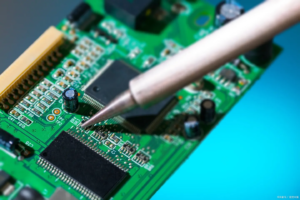High Voltage PCB Materials and Design
2023-02-08Many applications require high voltage, from large industrial equipment to computers. Design standards have become more stringent as designers create PCBs for high voltage DC.
How to choose high voltage PCB materials?
The materials used in high-voltage PCB designs need to maintain optimal performance in both normal environments and overvoltage events.
To design components for high-voltage PCBs can consider the following factors.
PCBs materials
The basic PCB materials provide the basis for the rest of the components. High voltage is usually accompanied by high power, which means high current and high temperature. Therefore, you should choose a substrate material with a high coefficient of temperature expansion (CTE) and design for good heat dissipation and distribution.
So the board itself should be the first consideration when ordering materials. High-voltage laminates offer very high performance, but they are also very expensive.
Resin and glass
The resin and glass content of a circuit board affects its durability in high voltage situations. Boards with high resin content and small glass patterns provide the best dielectric properties.
Copper
For high current applications can adopted heavy copper PCBs design. And the copper used to create the PCB vias should be heavy enough to withstand high currents and mechanical stress.
High-voltage PCB design tips
Designers must carefully manage the power supply on the board to ensure power integrity to prevent accidental arcing between exposed conductors. These arcs can lead to component insulation damage or surface traces on the board, which increases the likelihood of future arcing. Eventually, arcing can cause a direct short circuit, and the resulting current surge can fry the board, damage components, or endanger users.
Therefore, after selecting the PCB material, design principles to improve its suitability for high-voltage DC bias need to be followed, such as
- Selecting a smooth surface finish treatment and conformal coating to minimize the possibility of arcing.
- Cutting slots or grooves in the board surface also helps to extend the creepage distance.
- Keep power routing short, thick and as straight as possible.
- Follow safety standards for spacing.
- Avoid sharp corners in routing and pad layout
- Reduce board edge burrs after routing
What are the high voltage applications?
Many industries require high-voltage resistant PCBs, such as
- Spacecraft and other space equipment
- High altitude vehicles
- High-tech lasers
- Particle colliders
- Motor drives
- Robotics
- Computing devices
To summarize
Material selection for industrial boards is not limited to stacking options. While these are very important, the other materials listed above also play an important role in the ability of high voltage boards to operate reliably in an industrial environment.
The industry leader in beat automation, rapid, high quality prototyping and low volume production PCBs is experienced in building boards to meet the requirements of production facilities and will help you achieve your goals.
KingPCB has extensive manufacturing and assembly experience for PCB prototypes, low volume production, and high volume production. Contact us now for a quote instantly.




